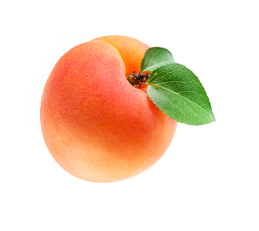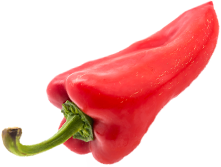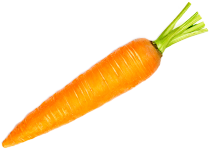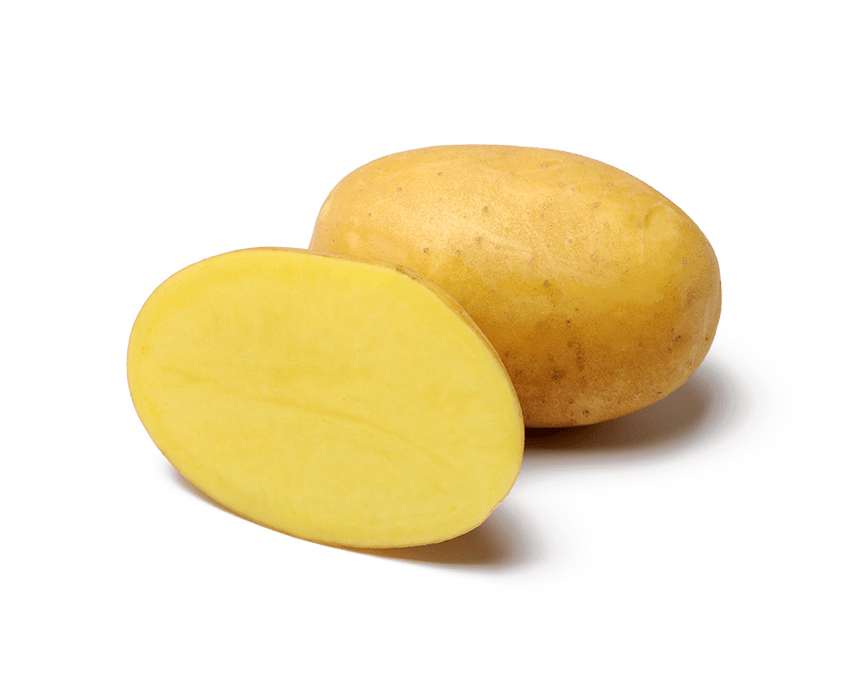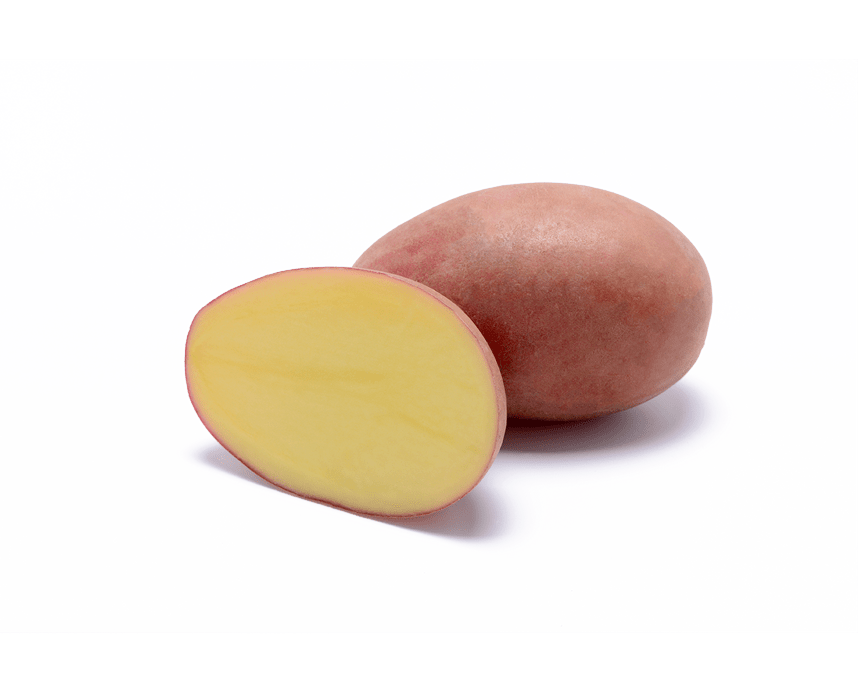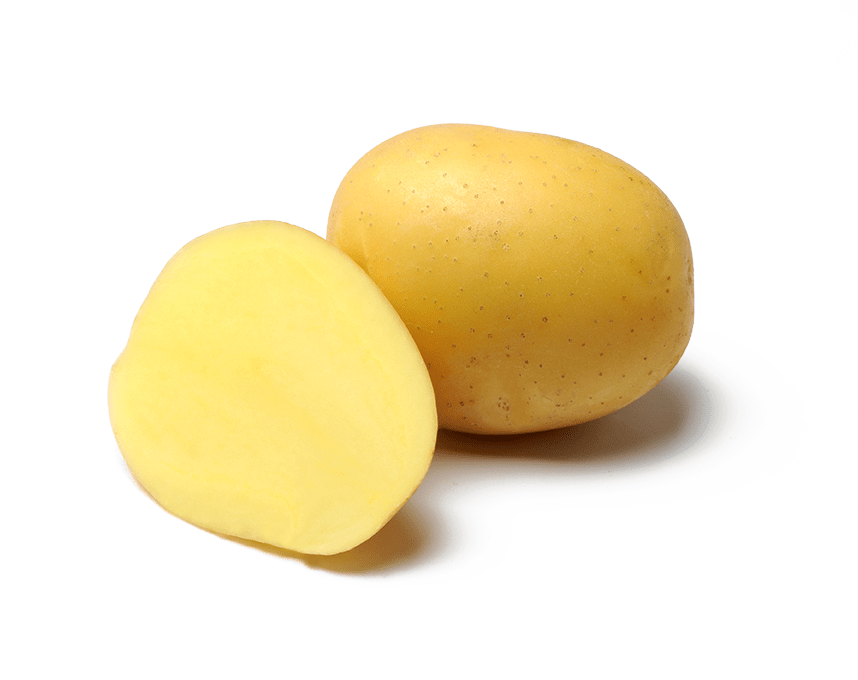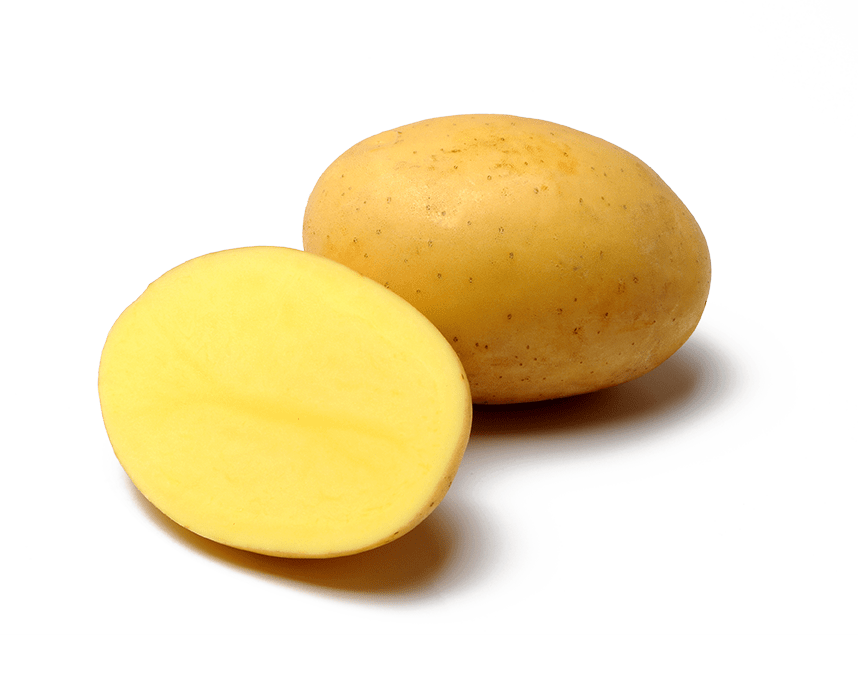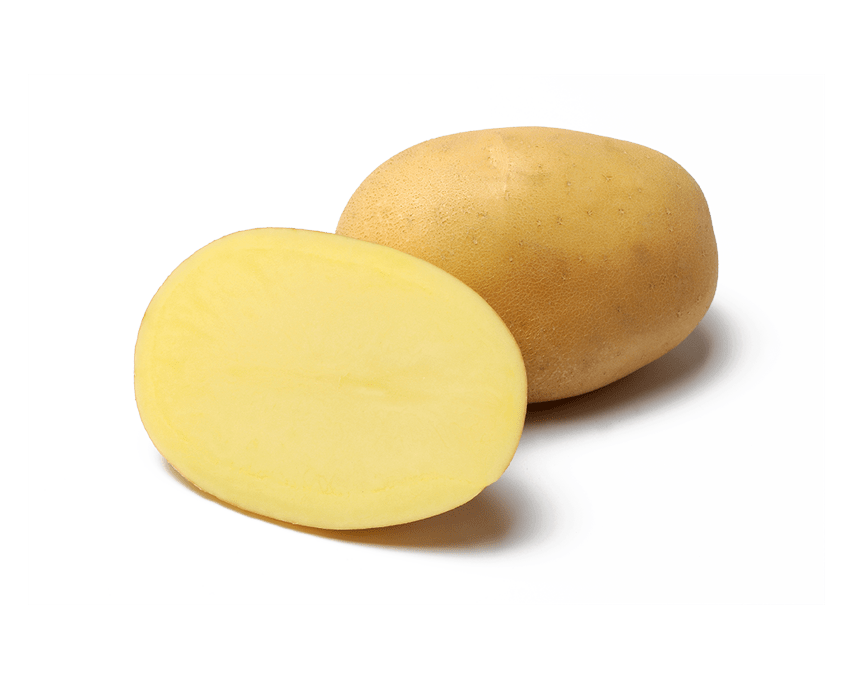
Eye depth
Flesh color
Skin color
Shallow
Yellow
Yellow, smooth to mild mesh
PCN
Ro1, Ro 3-5
The data from the table are made on the basis of official varieties testing and / or based on the experience of the manufacturer. However, as potato is a natural product, we can not assume responsibility for the above data.
Jelly is a consumable variety of exceptional quality, medium late, suitable for processing and production of French fries.
Jelly has tubers that are oval in shape with very shallow eye depth. The flower is yellow, smooth with a slightly mesmerized grid. The color of the meat is yellow and very stable after cooking. This variety has a very good yield with a high proportion of uniform market turbers medium to large, with good uniformity.
Resistance: This variety is characterized by resistance to the most common causes of viral, fungal and bacterial diseases.
Purpose: The variety is intended for medium late production of potatoes of very good taste that is suitable for the production of fries. It is characterized by a high level of sleepiness, thanks to which it is very good to handle storage over a long period of time.
Recommendations for growth: Jelly has medium requirements for soil quality and water supply. Tolerance to drought is medium, and secondary growth of tubers occurs in cultivation in extreme conditions and can very easily be avoided by timely and uniform irrigation.
Planting: Recommended spacing between rows is 28-30 centimetres (~ 40,400 plants / hectare) with normal planting depth.
Preparation: normal according to local standards.
Herbicides: This variety shows low sensitivity to late application (after emergence) of herbicides based on metribuzine – Sencor.
Fertilization: Jelly is grateful for the harmonious fertilization as a variety. A total amount of nitrogen of 140 kilograms / hectare is recommended. In addition to good potassium supply (250-300 kilograms / hectare) and with phosphorus 100 kilograms / hectare, care should be taken of sufficient magnesium (60 kilograms / hectare). Initially, residues of the previous culture and organic fertilization must be taken into account.

